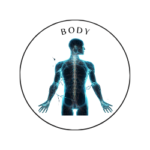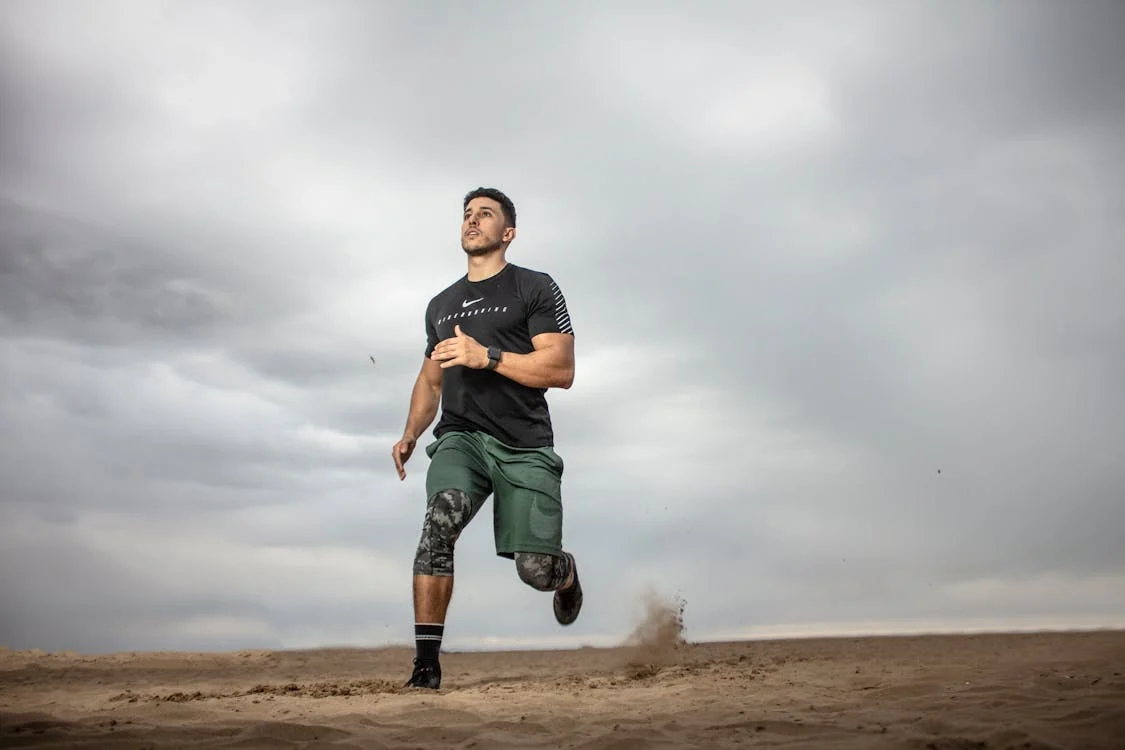 Mind
Mind
- Digital and Modern Well-being
- Mental Health and Emotional Well-being
- Mind-Body Connection and Holistic Health
- Parenting and Family
- Personal Growth and Development
- Relationships and Social Well-being
- Stress and Relaxation
- Therapeutic and Creative Practices
- Trauma and Recovery
- Work, Productivity, and Discipline
 Body
Body
 Fitness
Fitness
 Food
Food
 Beauty
Beauty
Beginner’s Guide to Starting a Fitness Journey


Beginner’s Guide to Starting a Fitness Journey
Starting a fitness journey is an exciting decision that can bring tremendous benefits to your health, energy, and overall quality of life. However, it can feel overwhelming if you’re new to exercise or unsure where to begin. This guide will walk you through the basics, from setting goals to choosing workouts and staying motivated. By the end, you’ll have a clear roadmap to help you start and stay on track with your fitness journey.
1. Define Your Fitness Goals
The first step in starting any fitness journey is to set clear, achievable goals. Having well-defined goals will keep you motivated and give you a sense of purpose as you begin. Consider what you want to accomplish with your fitness journey, whether it’s improving your health, losing weight, gaining muscle, or increasing your endurance.
Tips for Goal-Setting:
- Be Specific: Vague goals like “get fit” are hard to measure. Instead, aim for specific goals like “lose 10 pounds” or “run a 5K.”
- Set Measurable Milestones: Make sure you can track your progress, whether it’s through measurements, time, or weight.
- Set Realistic and Attainable Goals: Start with goals you can reasonably achieve to avoid burnout or frustration.
- Create Short- and Long-Term Goals: Having both types keeps you motivated in the short term while working toward your bigger vision.
2. Choose the Right Type of Exercise for You
A balanced fitness routine typically includes a mix of cardiovascular exercise, strength training, and flexibility exercises. Each type of exercise offers unique benefits, so incorporating all three is ideal. However, when starting out, focus on activities you enjoy and build up gradually.
Types of Exercise to Consider:
- Cardio: Activities like walking, running, cycling, or dancing improve heart health and endurance.
- Strength Training: Lifting weights, using resistance bands, or bodyweight exercises (like push-ups and squats) build muscle and strengthen bones.
- Flexibility and Mobility: Stretching, yoga, or Pilates can enhance flexibility, prevent injury, and improve range of motion.
Beginner Tips:
- Start with 2-3 days per week of cardio, 1-2 days of strength training, and 1 day of flexibility work.
- Choose activities that interest you. If you hate running, try a dance class or cycling instead.
3. Create a Workout Plan
A structured workout plan will keep you consistent and help you build a habit. If you’re new to exercise, consider starting with shorter workouts (20–30 minutes) and gradually increasing the intensity and duration as you progress.
Sample Beginner Workout Plan:
- Day 1: Cardio (20–30 minutes of walking, jogging, or cycling)
- Day 2: Strength Training (15–20 minutes of bodyweight exercises like squats, push-ups, and lunges)
- Day 3: Rest or light stretching/yoga
- Day 4: Cardio (20–30 minutes)
- Day 5: Strength Training (15–20 minutes)
- Day 6: Flexibility (30 minutes of stretching or a yoga class)
- Day 7: Rest
Key Points:
- Always start with a warm-up (5–10 minutes of light cardio) and end with a cool-down (5–10 minutes of stretching).
- As you progress, gradually increase your workout duration, weight, or intensity.
4. Focus on Form, Not Just Reps
Good form is crucial for preventing injuries and getting the most out of each exercise. When you’re new to working out, prioritize mastering the proper technique before trying to lift heavy weights or do high-intensity moves.
Tips for Proper Form:
- Watch Tutorial Videos: There are plenty of free videos available that demonstrate proper form for different exercises.
- Start with Bodyweight Exercises: This helps you learn the movements without added resistance.
- Consider a Trainer: If possible, working with a certified personal trainer—even for a few sessions—can ensure you’re performing exercises safely and correctly.
5. Incorporate Rest and Recovery
Rest days are just as important as workout days. Your muscles need time to repair and grow stronger, so be sure to schedule at least one or two rest days per week. Without adequate recovery, you increase the risk of injury and burnout.
Recovery Tips:
- Active Recovery: Light activities like walking or gentle stretching on rest days can aid in recovery without overloading your muscles.
- Sleep: Aim for 7–9 hours of sleep each night to help your body recover and stay energized.
- Hydration: Drink water consistently to stay hydrated, which helps your muscles function and recover optimally.
6. Track Your Progress
Tracking your progress can keep you motivated and help you stay consistent. It also allows you to see how far you’ve come, which can be a huge morale boost!
Ways to Track Progress:
- Journaling: Write down your workouts, reps, sets, and how you feel each day.
- Photos: Take progress photos every few weeks to visually see changes in your body.
- Measurements: Measure your waist, hips, arms, and other areas to track changes over time.
- Fitness Apps: Use apps like MyFitnessPal, Fitbit, or other workout trackers to monitor workouts and stay organized.
7. Focus on Nutrition
Exercise is only part of the fitness equation. A balanced diet fuels your workouts, aids in recovery, and helps you reach your fitness goals. Prioritize a nutrient-rich diet with a mix of lean proteins, whole grains, healthy fats, and plenty of fruits and vegetables.
Basic Nutrition Tips:
- Protein: Essential for muscle repair; include protein in every meal.
- Complex Carbs: Choose whole grains, vegetables, and fruits for sustained energy.
- Healthy Fats: Include sources like avocados, nuts, and olive oil for balanced nutrition.
- Hydration: Drink enough water throughout the day, especially around workouts.
8. Build Habits and Stay Consistent
Consistency is key to seeing results in any fitness journey. Focus on building sustainable habits that will keep you on track for the long haul.
Tips for Building a Fitness Habit:
- Schedule Workouts: Set aside specific times for your workouts to make them part of your routine.
- Start Small: Aim for a few days a week initially, then add more days or intensity as you feel comfortable.
- Set Reminders: Use your phone or calendar to remind yourself of workout days.
- Celebrate Small Wins: Recognize and reward yourself for progress and milestones, no matter how small.
9. Find a Support System
Support from friends, family, or a workout buddy can make a huge difference in keeping you motivated. Joining a gym class, finding an online community, or simply having a friend to check in with can provide accountability and encouragement.
Ways to Find Support:
- Workout Buddy: Exercise with a friend for mutual motivation.
- Join Classes: Fitness classes can be a fun way to stay committed and meet like-minded people.
- Online Communities: Many social media groups, apps, and websites offer support for beginners on their fitness journeys.
10. Be Patient and Trust the Process
Remember, results take time. It’s common for beginners to get frustrated when progress seems slow, but consistency is key. Every workout and healthy choice contributes to your overall success. Try not to compare yourself to others; everyone’s journey is unique.
Tips for Staying Patient:
- Focus on Progress, Not Perfection: Small steps forward add up over time.
- Acknowledge Setbacks: Everyone experiences setbacks, but it’s important to get back on track without being hard on yourself.
- Celebrate Non-Scale Victories: Improvements in mood, energy levels, strength, and endurance are all signs of progress.
Sample Beginner Weekly Routine
Here’s a simple weekly routine to help you get started.
- Day 1: 20–30 minutes of light cardio (walking or cycling)
- Day 2: Full-body strength workout (15–20 minutes using bodyweight exercises)
- Day 3: Rest or light stretching
- Day 4: Cardio (jogging or brisk walking for 20–30 minutes)
- Day 5: Strength workout focusing on upper body (push-ups, rows, planks)
- Day 6: Flexibility (stretching or yoga for 30 minutes)
- Day 7: Rest
Conclusion
Starting a fitness journey is a rewarding process that offers numerous physical and mental health benefits. By setting clear goals, creating a balanced workout plan, focusing on form, and maintaining consistency, you’ll build a strong foundation for long-term fitness success. Remember to listen to your body, prioritize rest and recovery, and most importantly, enjoy the journey!
